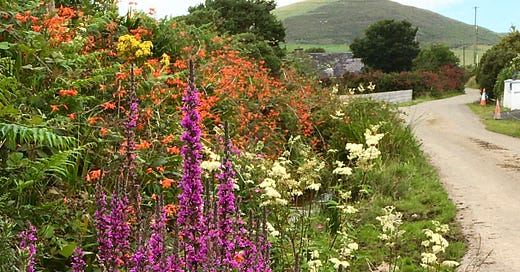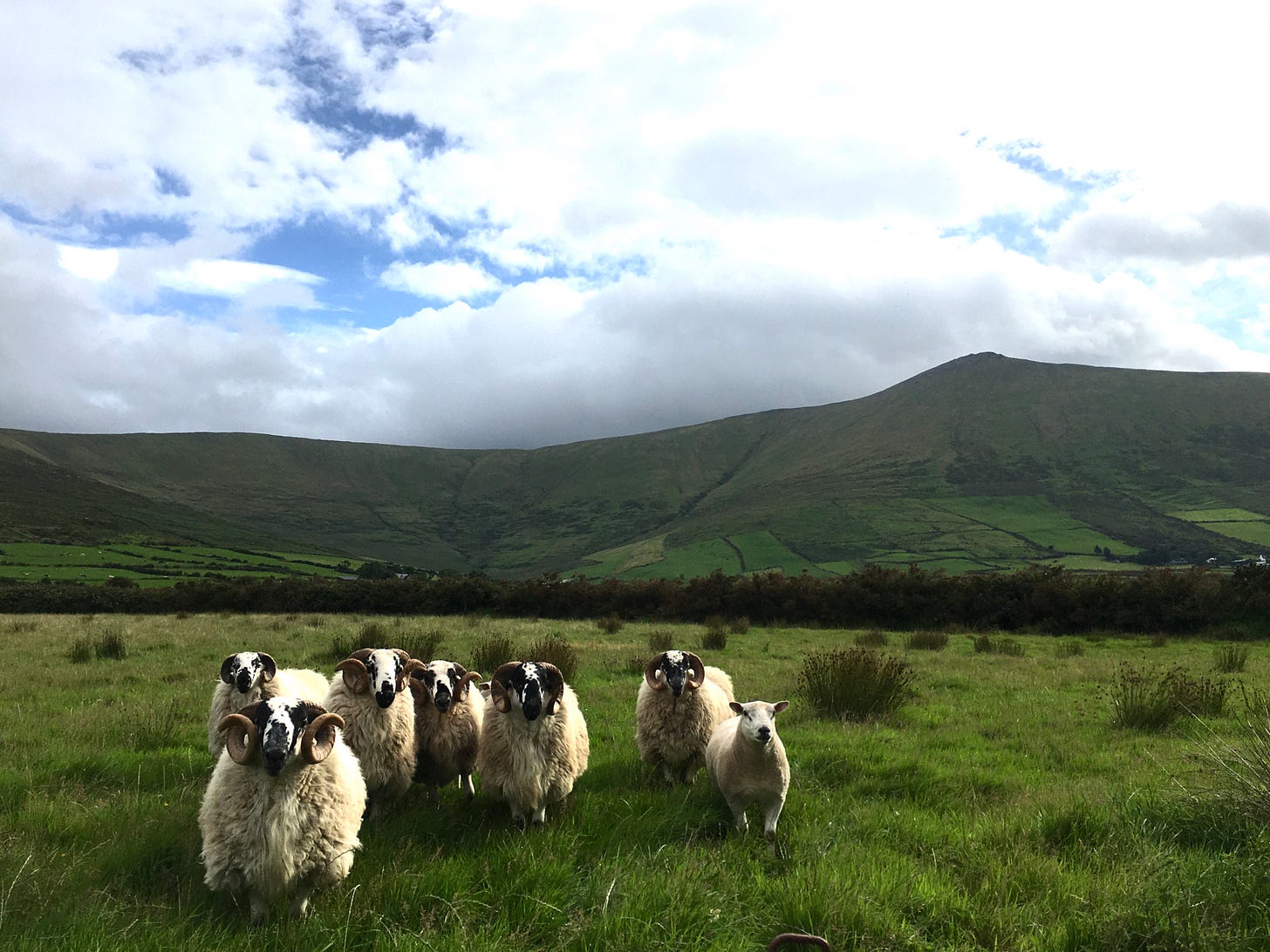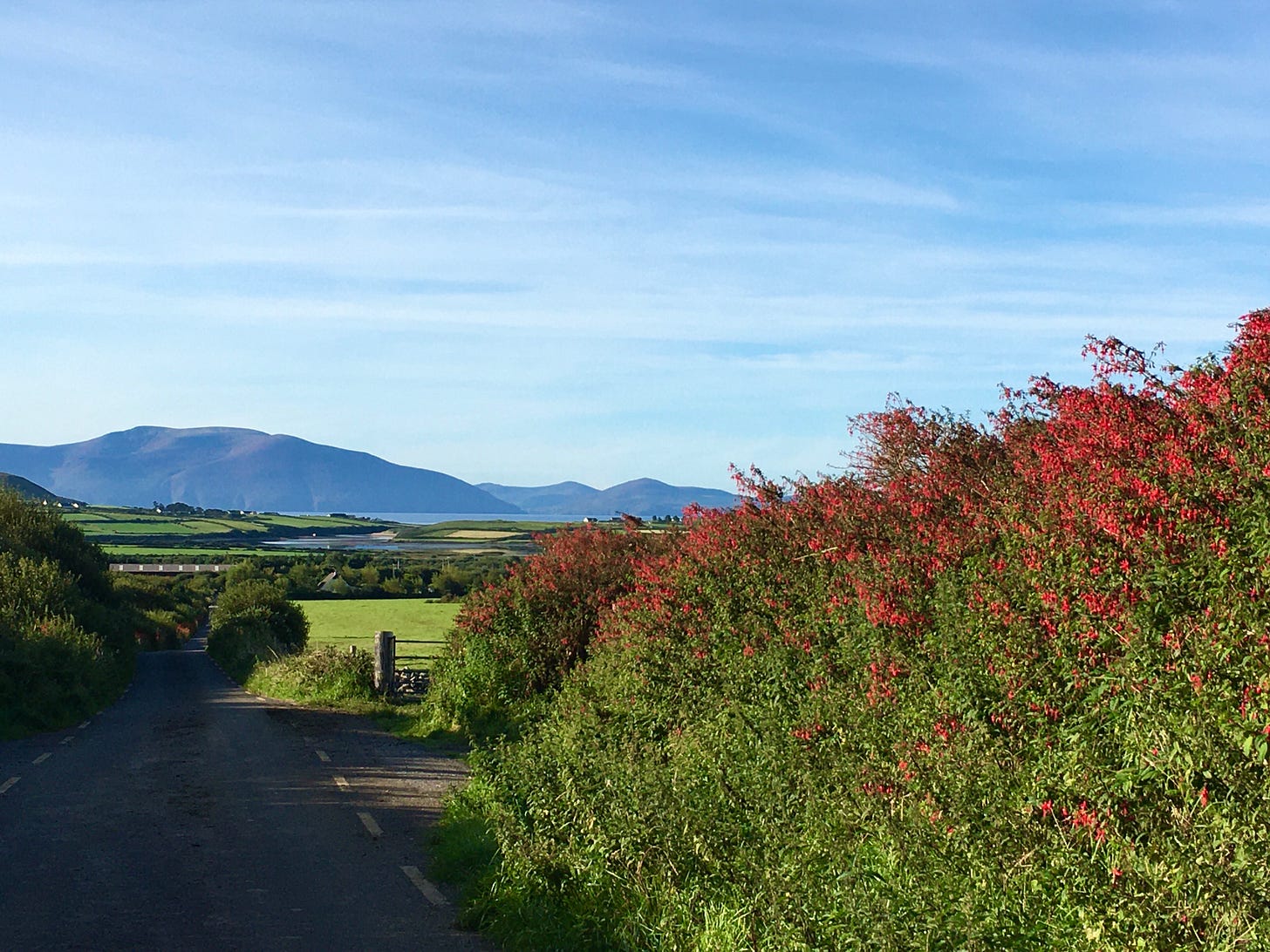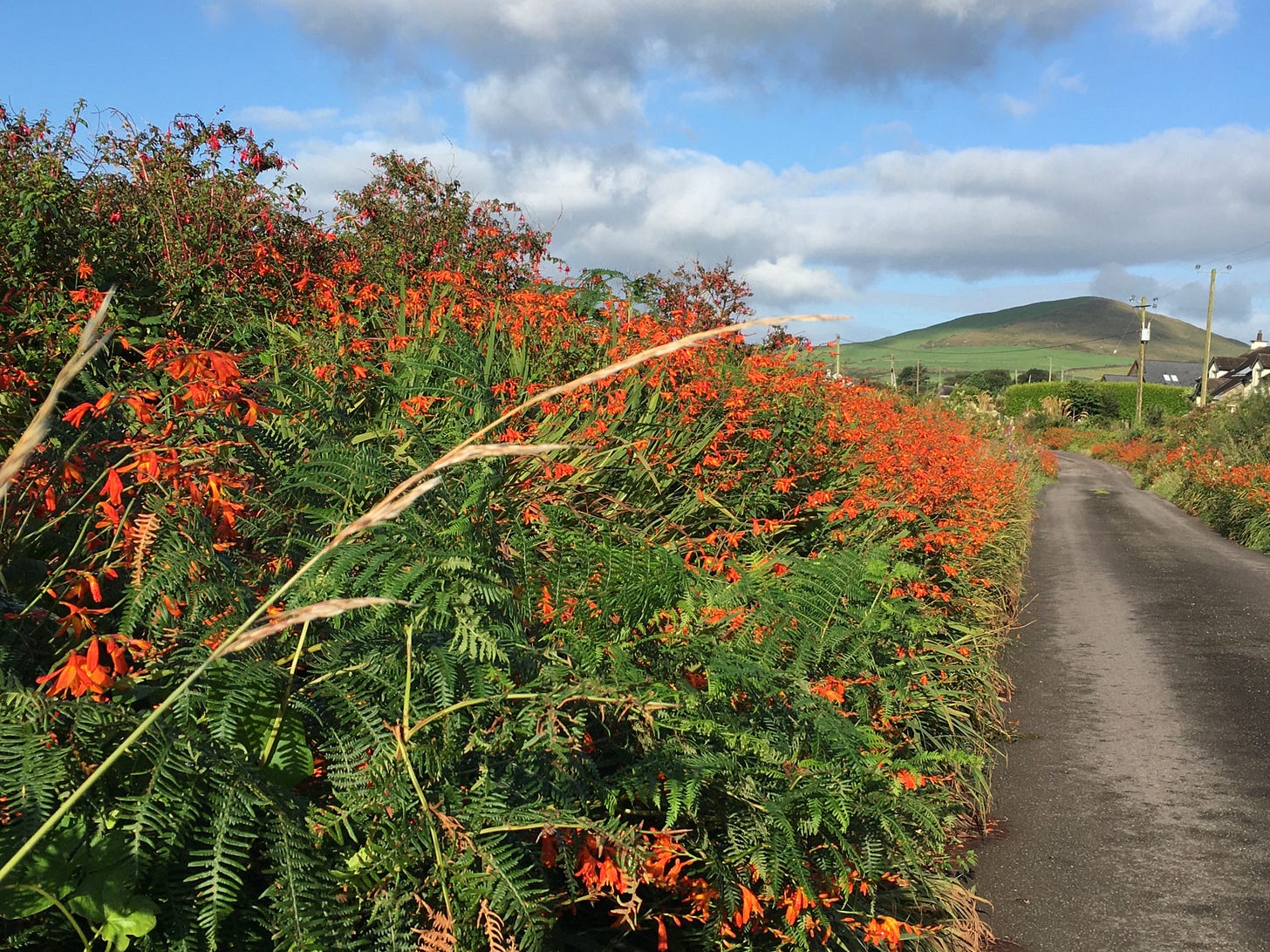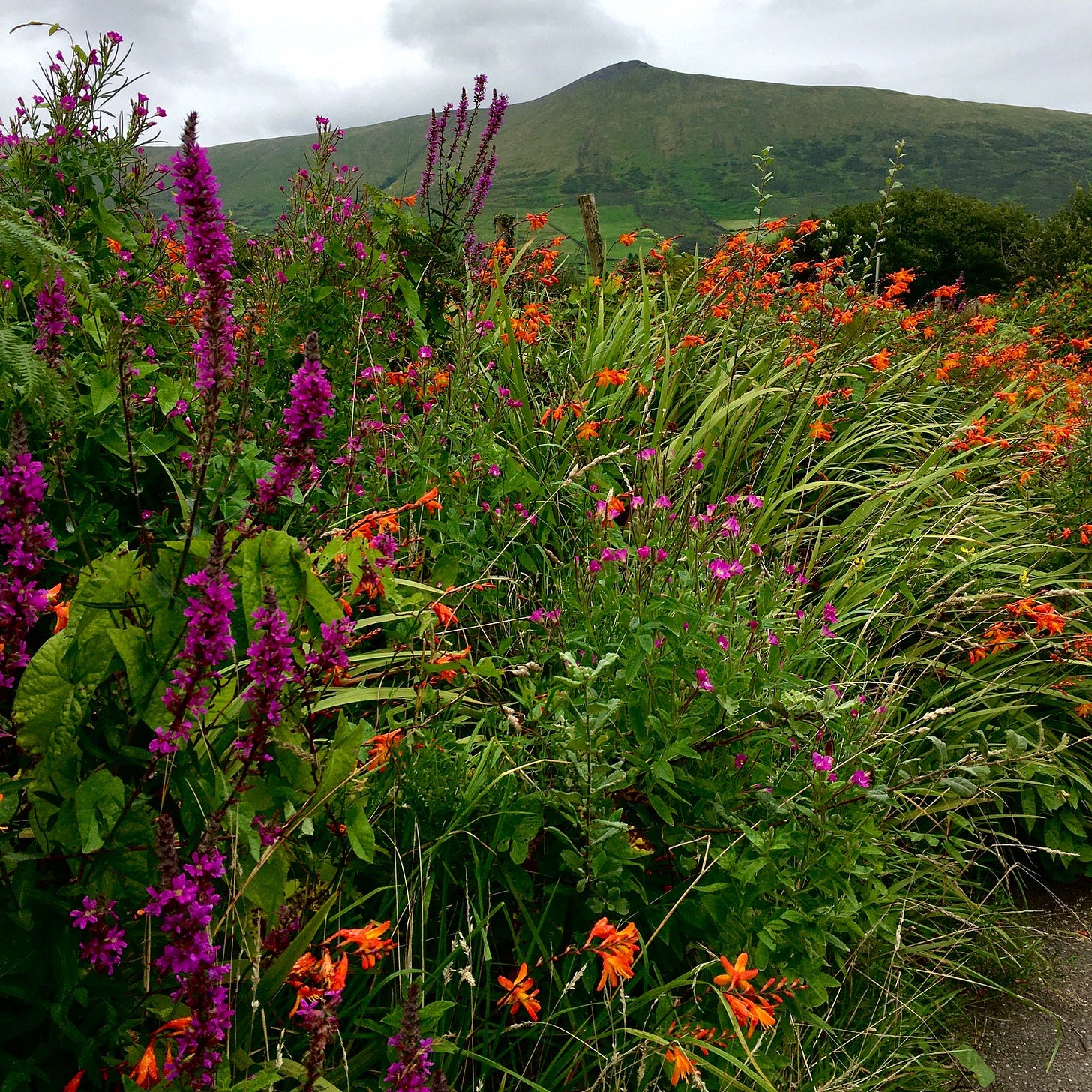I was just about to share some of the spectacular colours of the summer with you when I happened to look out of the window and saw a car stopped beside the field next door. Not the usual rust bucket owned by that particular farmer, but a normal-looking Fiesta-type silver hatchback. The elderly driver was getting something out of the back.
Could it be a picnic? A camera or easel? No, of course not: this is West Kerry. It was a sheep.
Obviously one that had scrambled over/through the hedge into his field at the back of our house. He tussled her on a rope leash to the gate and let her in to join the rest of her flock. By the way she stalked up the field tossing her curls, she was clearly miffed at having been thwarted in her adventure.
The farmer slammed his hatchback and continued on his way, and I wondered whether his wife would ask questions the next time she opened the back for her shopping – but since she's a farmer's wife, probably not.
We’re VIPs (Very Important Persons) round here, don’t ye know – we ride by chauffered limousine
I shouldn't really be surprised – I often see sheep-herding by car down our lane. And sometimes even by dog alone, the farmer strolling along miles behind while his flock hurries on ahead, knowing exactly where they are supposed to go. Barring the odd flurry of excitement when they turn a corner and meet a car coming the other way, or divert into someone's open garden gate, everything is fairly chilled here.
Incidentally, the car belonging to the farmer who owns the errant ewe is quite spectacular. An estate (station-wagon) of indeterminate age, it can often be seen crawling the dirt track half a mile up in the clouds of An Cnoc Maol Beag ("The Small Bare Hill"), the mountain behind us, where the sheep are specks of dandruff and paragliders look like dandelion seeds in the wind. It gets places you would think only goats and Maria von Trapp could reach – and without four-wheel-drive, too.
But up close, your eyes tend to pop out when you see the state of it. Not only is the interior filled with fence posts, rolls of wire, tools, salt block, sacks of feed, bottles of sheep drench, buckets, post hole diggers (and this is a car, don't forget, not a pickup), but there is a huge hole in the bonnet (hood), with the sides of the metal bent up into a ragged flower. Nothing unusual about that, twinkled the farmer when I asked about it; just that the bonnet catch was broken so his son had excavated through the top to open it for checking the oil. The hole was now also useful as ventilation, he grinned.
Anyway, to the summer colours.
All around here, the little lanes, or bohereens, are bordered with old walls topped with earthen banks, a style unique to western Ireland, western Wales and Cornwall. Whereas the UK two places usually have Beech or Oak trees planted along the banks, here the banks support Willow, Blackthorn or stunning Fuchsia hedges.
Fuchsia hedges light up the lanes in the Dingle Peninsula
At this time of year, these hedges burst into a glorious painting, framing misty views with primary colours. The flowers are a gorgeous scarlet, often with purple bells in the centre. They look surreal against the muted russets and ochres of the summer fields with their waving grasses and Foxglove seedheads.
But if that colour wasn't enough, along the main roads are swathes of brilliant orange, thanks to the cascading ranks of Montbretia waving in the breeze.
Despite now being ubiquitous across West and South Kerry, both these species are escapees from Victorian gardens. The Monbretia, Crocosmia x crocosmiiflora, known as Fealeastram dearg ("Red Iris") in Irish, is a hybrid of two South African species, bred for French gardens in the 1800s. It was named for a French botanist called Coquebert de Montbret, who accompanied Napolean on his invasion of Egypt in 1798.
The Montbretia signal that summer’s really here
The Fuchsia, Fuchsia magellanica Riccartonii, is a hybrid from Chile developed in France and Scotland in 1823, and found to make excellent hedges in country houses – and is now used by farmers and builders alike to border fields and roads. The first Fuchsia was discovered in South America by the French monk Charles Plumier, who was looking for new plants for Louis XIV. He named the Fuchsia in honour of the German botanist, Leonhard Fuchs. In Ireland, the Fuchsia is also known as Deora Dé, or Tears of God.
The Tears of God
Stunning though both these plants are in the hedgerows, especially when accompanied by silvery-gold Meadowsweet, Purple Loosetrife and pink Rosebay Willow Herb, they do block out native plants – particularly the Montbretia, which covers a bank completely and keeps coming back year after year from its knobbly corms underground until nothing else can grow. At least the Fuchsia hedge provides nesting and roosting places, as well as food for the Elephant Hawmoth's caterpillar, and both flowers nurture pollinators. In my garden, Montbretia comes up through other plants and can completely take over a bed if not addressed.
Purple Loosestrife and Meadowsweet mix with Montbretia beside a narrow stream
But as an artist, I glory in the orange, particularly when paired with its complement on the colour wheel, purple. And the Fuchsia hedges, humming with bees and hover flies, really announce that summer is here, despite the weather.

